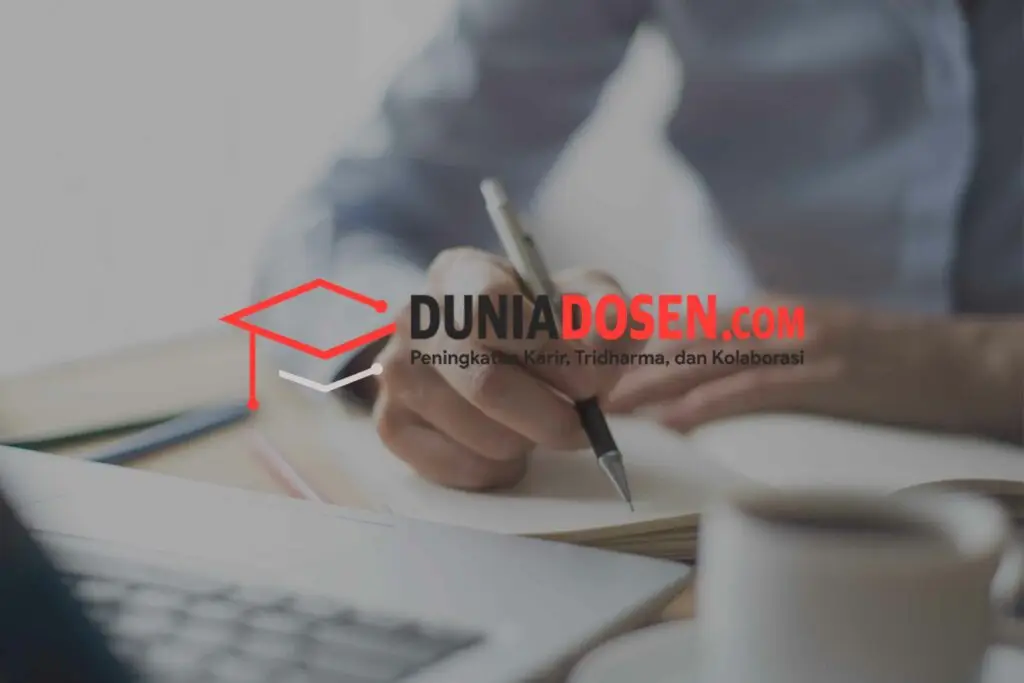Bagi dosen mempelajari contoh proposal hibah dosen pemula menjadi hal yang penting untuk dilakukan. Sebab lewat contoh inilah bisa dipelajari bagaimana teknik menyusun proposal usulan yang baik dan benar.
Jika proposal usulan penelitian sudah disusun mengikuti format dan isinya juga mendetail dan memenuhi aspek substantif lainnya. Maka peluang untuk lolos seleksi dan menjadi penerima hibah terbuka lebih lebar.
Format Proposal Hibah
Bicara mengenai contoh proposal hibah dosen pemula, tentu tidak jauh-jauh dari pembahasan mengenai format proposal. Pasalnya, pihak penyelenggara program hibah biasanya sudah menetapkan format proposal usulan.
Format ini menjelaskan struktur awal sampai akhir dari proposal usulan yang dikirimkan ke pihak penyelenggara. Semua pendaftar diwajibkan untuk mengikuti format ini. Jika sudah sesuai maka bisa dinyatakan lolos tahap administrasi. Begitu pula sebaliknya.
Jadi, ketika Anda ingin mengikuti program hibah penelitian pastikan sudah mengikuti format proposal yang sudah ditetapkan. Jangan asal dan sekedar menyusun proposal tanpa melihat format. Ketika tidak sesuai maka besar kemungkinan tidak lolos seleksi administrasi.
Pelajari lebih lengkap apa itu ‘Penelitian Dosen Pemula’:
- Skema Penelitian Dosen Pemula (PDP): Persyaratan dan Luaran
- 2 Jenis Luaran Penelitian Dosen Pemula dan Kriterianya
- 11 Tips Membuat Proposal Hibah Penelitian agar Lolos Seleksi
Contoh Proposal Hibah Dosen Pemula
Membantu Anda para dosen dalam menyusun proposal hibah penelitian yang baik. Berikut adalah contoh proposal hibah dosen pemula yang dinyatakan lolos dalam program PDP tahun 2018:
Proposal Penelitian Tahun 2018
- Judul Penelitian
MANAGEMENT OF FOREST : THE EFFECT OF GLOBAL WARMING TOWARDS INSECT FAUNA ON FOREST AREA
Bidang Fokus RIRN / Bidang Unggulan Perguruan Tinggi: Kebencanaan
Tema: Teknologi dan manajemen lingkungan
Topik: Konservasi sumber daya alam
Rumpun Bidang Ilmu: Manajemen Hutan
Kategori (Kompetitif Nasional/ Desentralisasi/ Penugasan): Penelitian Kompetitif Nasional
Skema Penelitian: Penelitian Dosen Pemula
Strata (Dasar/ Terapan/ Pengembangan): SBK Riset Pembinaan/Kapasitas
SBK (Dasar, Terapan, Pengembangan): SBK Riset Pembinaan/Kapasitas
Target Akhir TKT: 2
Lama Penelitian (Tahun): 1
- Identitas Pengusul
Nama, Peran: IBNU SINA Ketua Pengusul, ISKANDAR ZULKARNAEN M.Ud Anggota Pengusul 1
Perguruan Tinggi/ Institusi: Universitas Pamulang
Program Studi: Manajemen
Bidang Tugas:
ID Sinta: 6001389, 6163292
H-Index: 2, 0
- Mitra Kerjasama Penelitian
Pelaksanaan penelitian dapat melibatkan mitra kerjasama, yaitu mitra kerjasama dalam melaksanakan penelitian, mitra sebagai calon pengguna hasil penelitian, atau mitra investor.
Mitra:
Nama Mitra:
- Luaran dan Target Capaian
Luaran Wajib:
Tahun luaran: 1
Jenis Luaran: Publikasi Ilmiah Jurnal Nasional Tidak Terakreditasi
Status target capaian (accepted, published, terdaftar atau granted, atau status lainnya): accepted/published
Luaran Tambahan:
Tahun luaran: 1
Jenis Luaran: Publikasi Ilmiah Jurnal Internasional
Status target capaian (accepted, published, terdaftar atau granted, atau status lainnya): accepted/published
- Anggaran
Rencana anggaran biaya PPM mengacu pada PMK yang berlaku dengan besaran minimum dan maksimum sebagaimana diatur pada buku Panduan Penelitian dan Pengabdian kepada Masyarakat Edisi 12.
Total RAB 1 Tahun Rp. 20,000,000
Tahun 1 Total Rp. 20,000,000
| Jenis Pembelanjaan | Item | Satuan | Vol. | Biaya Satuan | Total |
|---|---|---|---|---|---|
| HONOR | Co-researcher | 1 | 1.0 | 2,000,000 | 2,000,000 |
| HONOR | Researcher | 1 | 1.0 | 4,000,000 | 4,000,000 |
| BELANJA BAHAN | Chemical equipment (alcohol, ethyl, acetate, etc) | 1 | 1.0 | 3,000,000 | 3,000,000 |
| BELANJA BAHAN | Insect trap equipment (pitfall, malaise, light trap, etc) | 1 | 1.0 | 5,000,000 | 5,000,000 |
| BELANJA BAHAN | Office equipment (papers, pendrive, pen, marker, etc) | 1 | 1.0 | 3,000,000 | 3,000,000 |
| BELANJA PERJALANAN LAINNYA | travel expenses (co-researcher) 1 | 1 | 1.0 | 1,500,000 | 1,500,000 |
| BELANJA PERJALANAN LAINNYA | travel expenses (researcher) | 1 | 1.0 | 1,500,000 | 1,500,000 |
Sebagai catatan tambahan, detail contoh RAB dalam proposal hibah dosen pemula tersebut adalah beberapa bagian saja. Seluruh biaya dalam penelitian wajib dicantumkan di RAB di dalam proposal. Sehingga akan lebih detail dibanding contoh di atas.
Ringkasan
Insects are among the groups of organisms most likely to be affected by climate change because climate has a strong direct influence on their development, reproduction, and survival.
Moreover, insects have short generation times and high reproductive rates, so they are more likely to respond quicker to climate change than long-lived organisms, such as plants and vertebrates.
Warming can potentially affect several aspects of insect life-cycle and ecology, especially those directly controlled by energy availability variables such as degree day (accumulative temperature needed for development).
Consequently, potential responses include changes in phenological patterns, changes in habitat selection, and expansion and contraction of geographic and altitudinal ranges.The fossil record provides good evidence that insects have responded to past changes in climate.
Beetle remains clearly illustrate that species shifted their geographic ranges during the Quaternary in response to the glacial/interglacial climatic oscillations. Several carabid species living today only in the boreal regions of Europe, were present in the British Isles when the ice sheets covered most of northern and central Europe.
Conversely, many dung beetle species restricted today to the south of Europe were living in the British Isles during the thermal maximum of the Last Interglacial, when the climate of Britain was considerably warmer than it is today.
The purpose of this study is to provide information about the diversity and abundance of insects in selected forest areas. Those data will be used for analyzing the condition of forest in selected areas. This study also (a) will provide an example of how the use of simple theoretically based models including exogenous perturbations may improve our predictive capacity. Moreover, this approach provides an opportunity to examine the link between invasive species and climate change and how new suitable habitat may become available for species whose niche space is limited in some degree by climatic conditions and (b) the use of different scenarios is absolutely necessary when the reliability of the predictions is not clear, which is the case of the predicted future climate change. The use of different scenarios may allow us to examine the sensitivity of the predictions and to effectively communicate our researches to the general public and decision makers in our effort to reduce activities which led to global warming and make our earth sustainable for our future generations. The methodology used for this study such as (a) set up pitfall trap, malaise trap, and light trap in different trails of forest, (b) observation and sweep net along trails, (c) Species richness and abundance of insects were determined using Margalef index and the diversity was calculated using Shannon-Weaver index. The abundance and diversity of insects will be compared between sampling sites with respect to parameter reading. Expected outcome for this study is published in an international journal. TKT has been measured such as (a) the previous research has been done and will be used for next research, (b) methodology has been provided by several authors, and (c) technology outcome will be used for national policy for management of forest reserves.
keyword: Forest reserved, management forest, insect fauna,Indonesia
Latar Belakang
Global average surface temperature has increased by around 0.60C during the past century, with the 1990s being the warmest decade. Temperature changes vary geographically, greater at higher latitudes; and within the year, greater during the coldest months (Houghton et al. 2001).
There is now a consensus that anthropogenic emissions of CO2 and other greenhouse gases are ultimately responsible for these changes in climate (Houghton et al. 2001). The Third IPCC report predicts that temperatures will continue to rise during the next century, with increases of up to 5.80C by the year 2100 (Houghton et al. 2001).
Understanding how these human-induced changes in climate have affected individual species and communities and will do in the near future, has attracted a vast research effort during the last two decades.
Climate plays a primary role in determining both the geographic distributions of organisms and the distributions of the habitats upon which they depend. In the past, directional climate change has resulted in significant shifts in the distributions of species (Davis 1986).
Temperate tree species, for example, migrated at rates of tens of meters per year or more to keep up with retreating glaciers during the Holocene (Huntley and Birks 1983). If allowed to continue, greenhouse warming is similarly expected to result in significant shifts in vegetation types. To illustrate, a recent effort to model the effect of a doubling of greenhouse gas concentrations on vegetation projected shifts in major vegetation types in 16-65% of the land area of the lower 48 U.S. states, depending on the exact combination of models used (VEMAP Members 1995).
While climatic shifts of this sort have been observed in the past, and can be expected in the future even in the absence of human activities, the rate of greenhouse warming appears likely to be unprecedented in at least the last 100,000 years, with a doubling of greenhouse gases concentrations and associated warming expected to occur within a mere 100 years.
Although poorly understood, the rapidity of the change could have important implications for terrestrial biodiversity, with the possibility of significant species loss (Malcolm and Markham 1996, 1997).
Tinjauan Pustaka
Insects and the environment
Insects are cold-blooded organisms – the temperature of their bodies is approximately the same as that of the environment. Therefore, temperature is probably the single most important environmental factor influencing insect behavior, distribution, development, survival, and reproduction. Insect life stage predictions are most often calculated using accumulated degree days from a base temperature and biofix point. Some researchers believe that the effect of temperature on insects largely overwhelms the effects of other environmental factors (Bale et al 2002). It has been estimated that with a 20 C temperature increase insects might experience one to five additional life cycles per season (Yamamura & Kiritani 1998). Other researchers have found that moisture and CO2 effects on insects can be potentially important considerations in a global climate change setting (Coviella and Trumble 1999).
The changes in precipitation will affect insects
There are fewer scientific studies on the effect of precipitation on insects than temperature. Some insects are sensitive to precipitation and are killed or removed from crops by heavy rains – in some northeastern US states, this consideration is important when choosing management options for onion thrips (Reiners and Petzoldt 2005). For some insects that overwinter in soil, such as the cranberry fruitworm and other cranberry insect pests, flooding the soil has been used as a control measure (Vincent et al 2003). One would expect the predicted more frequent and intense precipitation events forecasted with climate change to negatively impact these insects. Other insects such as pea aphids are not tolerant of drought (Macvean and Dixon 2001). As with temperature, precipitation changes can impact insect pest predators, parasites, and diseases resulting in a complex dynamic. Fungal pathogens of insects are favored by high humidity and their incidence would be increased by climate changes that lengthen periods of high humidity and reduced by those that result in drier conditions. Insects are among the groups of organisms most likely to be affected by climate change because climate has a strong direct influence on their development, reproduction, and survival (Bale et al. 2002). Moreover, insects have short generation times and high reproductive rates, so they are more like to respond quicker to climate change than long-lived organisms, such as plants and vertebrates. Warming can potentially affect several aspects of insect life-cycle and ecology, especially those directly controlled by energy availability variables such as degree day (accumulative temperature needed for development).
Metode
Study sites:
Sampling will be conducted in 2019 at minimum on two different trails in the forest reserve. First sampling will be at trail one with possibility of limestone forest and the second sampling trails will be at trail two with possibility of dipterocarp forest.
Insect collection:
Eight light traps, four malaise traps and forty pitfalls will be set up at two trails. While setting up the traps, a sweep net will be used on bushes in the study area to catch insects manually.
Pitfall traps:
The pitfall trap is made up of a plastic jar with 6 cm diameter and total volume of 250 ml. A hole in the ground will be digging to place each jar beneath the ground. Each jar will be filled up to half of 70% alcohol. Two twigs will be buried at both sides of the hole and dried leaf will be placed on the twigs thus preventing the effect of rainfall. The traps will be left in the field for 24 hours before collection. The alcohol will be poured into a plastic bag containing a label made by pencil and brought back for further processing.
Malaise traps:
The malaise trap is made up of black nylon netting. A collection jar positioned at the topmost end of the trap and filled with 70% ethyl alcohol. The sweet odor of the alcohol will be attract the insect to fly towards it thus entering the jar and caught in it. The alcohol also preserved the caught insect.
Night sampling using light trap:
Light trapping is made up of white mosquito netting. The 160 watt mercury bulb will be powered by generator providing light to the light trap. Insect attracted to light will be caught at the net manually using hand, pill bottle or aspirator.
Databases:
Evaluating climate change clearly requires some representation of the future climate. Many general circulation models (GCMs) have been developed, with two examples that have become widely used: the CGCM1 model developed by the Canadian Centre for Climate Modeling and Analysis and another by the Hadley Centre for Climate Prediction and Research. This problem has been addressed through modeling and interpolation techniques that project GCM predictions to ecologically meaningful spatial and temporal scales.
Jadwal

Daftar Pustaka
- Bale J S et al 2002 Herbivory in global climate change research: direct effects of rising temperature on insect herbivores. Global Change Biol. 8 1–16
- Cammell M, Knight J, 1992. Effects of climatic change on the population dynamics of crop pests. Adv. Ecol.Res. 22, 117–162.
- Carlos E. Coviella, and John T. Trumble. 1999. Effects of Elevated Atmospheric Carbon Dioxide on Insect-Plant Interactions. Conservation Biology. Vol 3 (4).
- Davis, M.B. 1986. Climatic instability, time lags, and community disequilibrium. IN: Community ecology. Ed. by Diamond, J. and T. J. Case. Harper and Row, Publishers, New York, pp. 269-284.
- Fauziah Abdulah.2005 The Beetle Assemblage of Langkawi Island. Malaysian Journal of Science, 24 (Langkawi Special Issue). pp. 185-198. ISSN 13943065
- Fauziah Abdullah and Ibnu Sina. 2009. Rove Beetles (Coleoptera: Staphylinidae) of Lanjak Entimau, Sarawak, East Malaysia. International Journal of Zoological Research 5(3)126-135
- Fauziah Abdullah and Kamarulnizam Shamsulaman. 2010. Ground Beetle (Coleoptera: Carabidae) at Lanjak Entimau, Sarawak, Malaysia. Journal of Entomology 7 (1): 44-53,
- Fauziah Abdullah. 2006 Diversity of Beetles in North East Langkawi Islands, Malaysia. Malayan Nature Journal 2006, 54(4).419-431 ISSN0025-1291 (ISI/SCOPUS Cited Publication)
- Fauziah Abdullah. 2007. Diversity and Abundance of Beetle Fauna at the South western side of Endau-Rompin National Park, Johore, Malaysia. In Biodiversity at Selai, EndauRompin, Johore Ed. Haji Mohamed and Mohamed Zakaria.ISBN 978-983-42197-0- 3 (Non-ISI/Non-SCOPUS Cited Publication)
- Houghton, J. T., Y. Ding, D. J. Griggs, M. Noguer, P. J.Van Der Linden, and D. Xiaosu, Eds., 001: Climate Change 2001: The Scientific Basis: Contributions of Working Group I to the Third Assessment Report of the Intergovernmental Panel on Climate Change. Cambridge University Press, 881 pp.
Selain format tersebut, biasanya dalam proposal usulan yang diajukan juga melampirkan beberapa dokumen. Misalnya biodata pengusul dan juga biodata anggota pengusul. Lampiran-lampiran ini juga ditentukan formatnya, sehingga wajib diikuti.
Dalam menyusun proposal penelitian, Anda harus membuat ROADMAP PENELITIAN untuk membuat rencana penelitian jangka panjang. Mulai dari sini:











